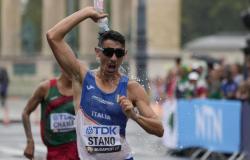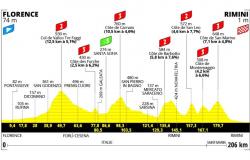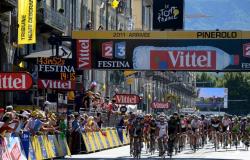
The conference ‘Landscape: perception and reality of places. Public history of communities’, promoted by the Municipality of Quartu and organized by the National Association of Garibaldi Veterans and Veterans. A meeting that saw teachers and experts from different Italian universities alternate on stage, a necessary moment of in-depth study in times in which the landscape is even more than usual at the center of attention. To not focus on nostalgic feelings but understand how to plan the future taking into account the historical memory of places.
The second and final session, entitled “Environment and public history of communities” was coordinated by Emanuela Locciprofessor at the University of Turin, and was opened by institutional greetings from the President of the Municipal Urban Planning Commission Stefano Busonera. “Yesterday I already appreciated a comparison between various sensitivities, because everyone has their own individual perception of what the landscape is. We therefore want to think together about what needs to be done today to protect it and transform it into an opportunity. I agree with what Dr. Ornano said yesterday in the passage in which she mentioned other Italian regions, such as Valle d’Aosta and Umbria, which have been able to use the landscape to make their economy more competitive. In fact, I think that Sardinia must focus decisively on the tourism sector, and it is therefore essential to plan our landscape. But opening up to the transition, without having an overly static vision, which instead brings painful notes such as illegal construction. We must understand this need and interpret it appropriately”.
Then space for the speakers. Starting from Manuel Vaquero Piñeiro of the University of Perugia, in a speech shared with Francesca Giommi of the University of Milan-Bicocca. “Landscape is already a central theme and perhaps will become even more so in the near future. In fact, I think that differentiated autonomy could also have repercussions on the landscape, and also from this point of view this Quartese initiative is undoubtedly very important”. A topic that takes on particular interest within national borders: “At a European level, the debate on landscape is purely Italian, probably because here we think strongly in subjective terms. And if the topic is hot at a national level, it is even more so at a regional level, because Sardinia represents an emblematic case: everyone talks about landscape”. Yet, she explained “There are dated contradictions. The underlying issue is that the landscape changes continuously, there is no possibility of focusing time. Even Sereni focused too much on traditional peasant agriculture at a time when more industrial agriculture was developing. You have to choose – he added – between a landscape that no longer exists and the valorization of today’s one. Worlds that must dialogue, because every piece of landscape is evidence of pressure groups, of economic forces, components of a world that confronts each other in a conflictual manner”. With another underlying problem: “Compared to other countries, such as France, Holland, Germany, Italian agriculture is the most backward, it is made up of poor farmers, who no longer want to be farmers, and in fact often abandon the countryside to move to the city. This is why we can say that today the landscape is configured as a resource but also as a reason for suffering”.
He then took the floor Stefano Mais, which deals with the History of Architecture for the University of Cagliari, to present a project that highlights the importance of water throughout Sardinian history. The program, supported by the Sardinia Region, describes all the fountains, aqueducts and reservoirs on the island. “A work on the landscape but also on public history, because it allowed us to think about the communities that live it every day”. A great reconnaissance to discover the landscapes, with wash houses and architecture also ennobled by great artists such as Sartorio. “We traveled throughout Sardinia and as an academic result we also thought of a traveling exhibition, which was also taken outside the island’s borders. We have also described the project on a website, with the location on paper of all the structures surveyed, so that any citizen, independently, can go and delve deeper into this work and perhaps retrace the itineraries we have built”. A database that has also become an app, for easier management from the smartphone, as part of an educational process that has also led to the production of a documentary film.
In the lineup to follow, space for Marco Cadinuteacher of History of Architecture and Landscape, convinced of the need to “carry on this kind of discussions, to propose them again over the years, because we are talking about a particularly hot and difficult topic, which fluctuates between its historical stratifications and the man in the street who defends his landscape”. Then he brought up the importance of the ‘project’: “The landscape is planned, it is not brought by the stork, there is always a planning action that stratifies the landscapes, in the countryside as well as in the historic centers”. To then explain that “the coast of Cagliari pushed me to think about the relationships between the historic centers and the sea. In fact, in Sardinia we have little appreciation for relations with the sea, few are working well on this. This is what archaic civilizations did instead, building in such a way that arriving from the sea they could magnify the places. By virtue of the fact that the most widespread tourism on the island is marine tourism, it should be investigated better, obviously outside the summer months”. And starting from the archive documents he also underlined how important it is to redesign the landscape of some specific places in Quartu, such as “the paths of Su Idanu, or Piazza IV Novembre, a particularly significant place already involved in various projects in the past”. “We therefore need to know more to understand better – he concluded –entering into the historical memory of the places, and then stopping to design”.
Stefano Piraprofessor of Modern History at the University of Cagliari, spoke on the Molentargius salt pans, “immense deposit of effort, as Carlo Cattaneo defined it, a man totally dedicated to his studies, for which he even chose to abandon Parliament”. “Together with the Masters of the salt pans, the hydraulic engineers of the past, the inhabitants of the 12 villages making up the current urban area were involved in a difficult job that went on for a thousand years – he said -, carrying out a very tiring job which however sometimes also acted as a social safety net”. An excursus on the history of salt production which also passed through the project “very ambitious to adopt the same French industrial rules, with the supply of the salt pans through cracks in the beach, also at the Quartese tower of Carcangiolas, with the water being transferred from one square to another”. On the other hand we are talking about a production “in the past very important, because once upon a time salt, fundamental for nutrition as a preservative par excellence, had an economic role comparable to oil in contemporary times”. And if in Cagliari for 500 years no one could be forced to work in the salt pans, Quartu was sometimes chosen also because moving allowed one to clear one’s criminal record: “Today it can absolutely claim its historical tradition on the salt pans” concluded the teacher.
The last speech of the conference took place on stage Annalisa Colombu of Legambiente, who also brought greetings from the new regional President Marta Battaglia and thanked “for the opportunity for discussion, dialogue, openness and also training. We shared a space where everyone could express themselves even if they thought differently from the others”. And then, going into specifics: “The landscape is not contemplation, it is the result of the dynamism of communities, it was built by the interrelation of the rights of individuals over time”. And now we have to ask ourselves what landscape we want for new and future generations: “The agricultural landscape has been very important but today it is influenced by climate change, which is accelerating and must be paid attention to. The entire scientific world, in fact, confirms that the problem is real and therefore we cannot ignore it. The water emergency has reminded us that we are one of the most sensitive regions, with an increase in temperatures double compared to the Mediterranean average which brings us to the limit of desertification. The same rise in sea level will bring important consequences, with the plains of the gulfs of Cagliari and Oristano at great risk. A contribution is therefore urgently needed to prevent these disasters. We must necessarily change energy sources, close thermoelectric power plants, and soon abandon methane too, creating green districts instead, because environment and development are an inseparable union. This is why the Tyrrhenian Link is fundamental for us, to allow the development of renewable energy and sources. Energy communities are fine but we also need something else: solar, photovoltaic, storage points, hydroelectric and electrochemical but also other solutions on the way. We need collective planning, we cannot waste time”.
The Mayor spoke at the end of the conference Graziano Milia: “In these two days of work, the meaning of this conference clearly emerged. In Sardinia we have an enormous need to discuss, not in a pre-ordained and pre-organised way but freely, on these topics, because they concern our future and that of the new generations. We must therefore be able to prioritize priorities: the first is undoubtedly to fight climate emergencies, without exploitation and opportunism. We can perhaps discuss how to do it, with mechanisms for involving local communities designed ‘with grace’, as Pasolini said. 75% of the energy we produce comes from fossils, this is our problem; we must ensure that this production is eliminated quickly, otherwise what kind of landscape can we talk about? We need to have a sense of responsibility, which has unfortunately been missing in the past, even in the Quarta area: I’m thinking for example of the extreme case of Marina delle Nereidi, a subdivision built where previously there was the sea. Sardinia needs to play a role and must do so by exploiting its potential”.
Further information
Update:
06/22/2024, 5.47pm





